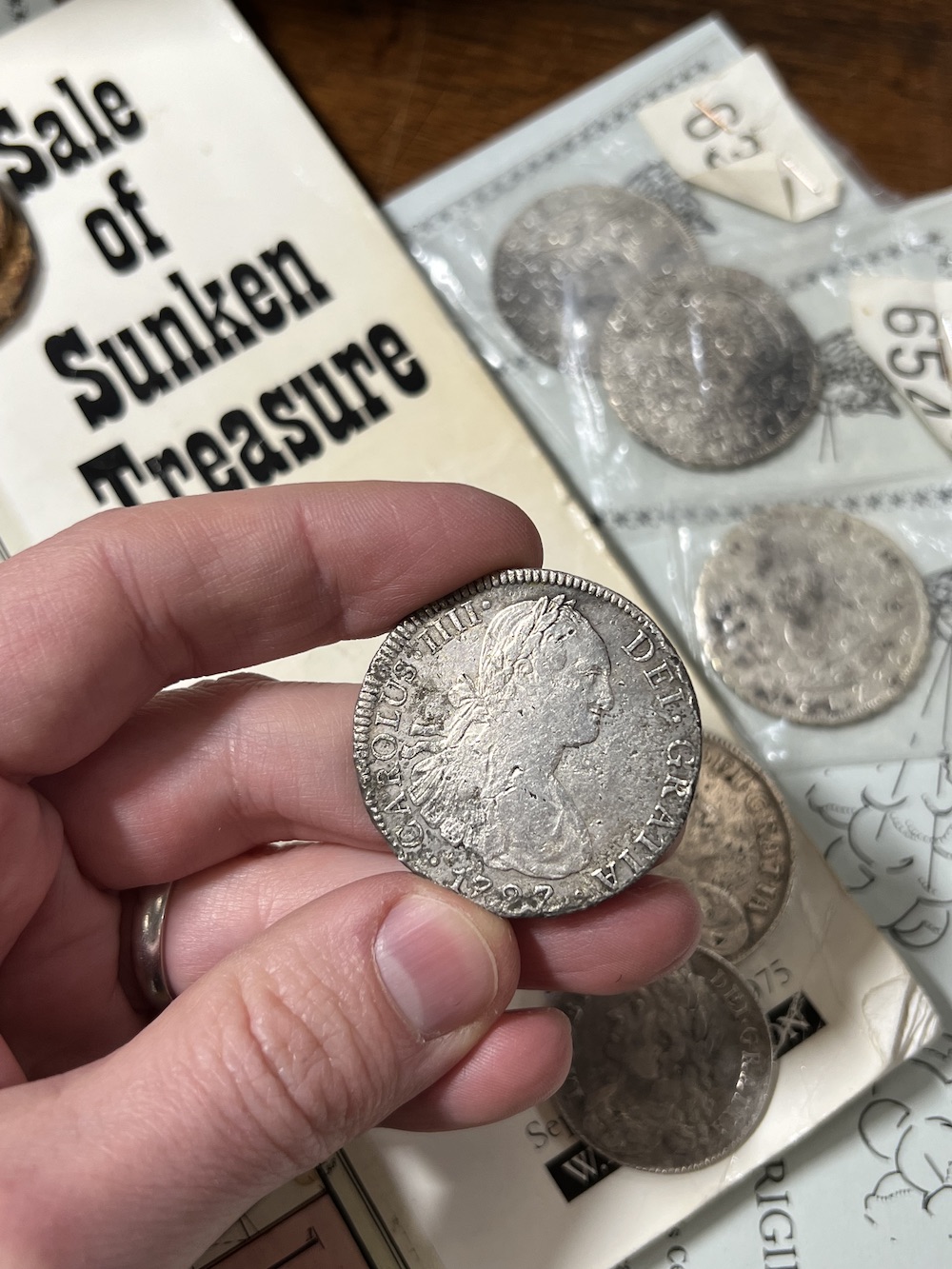Rare shipwreck coins set for sale
 A single-owner collection of rare coins recovered from famous shipwrecks will be offered in a specialist Jewellery, Coins and Watches auction on January 31st.
A single-owner collection of rare coins recovered from famous shipwrecks will be offered in a specialist Jewellery, Coins and Watches auction on January 31st.
The sale at Gildings Auctioneers in Market Harborough features 51 coins in four lots grouped in the wrecks they were recovered from, ranging from 1686 to 1806.

Twenty-two of the coins, which are expected to realise between £1,000-£1,500 and date from 1663 to 1699, originate from the 90-gun ship HMS Association, which served with distinction at the capture of Gibraltar in August 1704. However, along with other vessels in the fleet, Association was wrecked on the Isles of Scilly’s notorious Western Rocks during her return voyage from the Mediterranean on October 22, 1707. Sinking in just three or four minutes with a loss of over 800 men, contributing to the total loss that night of nearly 2,000 under the command of Admiral of the Fleet, Sir Cloudesley Shovell, it was the greatest maritime disaster of the time.

Another 17 coins, dating from 1736-1742 and estimated at £850-£1,250, were recovered from Hollandia, a Dutch East India Company ship which was wrecked on Scilly’s Gunner Rock in July 1743. They include examples of Dutch ducaton coins and Mexican pillar reales, better known as ‘pieces of eight’, as they were worth eight reales and could be cut into eight to make change.
The pride of the Dutch East India Company, the Hollandia was on her maiden voyage when she went down. As well as the 276 crew and members of the company on board, a vast load of silver, coins and personal artefacts was lost with her.
A further eight coins, which date from 1779-1802 and are estimated at £400-£600, again originate from Spanish South American colonies. They come from the 66-gun ship HMS Athenienne, which was lost on Esquerques Rocks off the Italian island of Sicily on October 20, 1806. A survivor’s account dramatically recalls how the masts and spars fell, with the crew attempting to make rafts to no avail. The captain of the ship, Robert Raynsford refused to abandon the sinking vessel, and went down with her alongside 347 other crew members, with 121 men and two women surviving.

The final lot, which is estimated at £80-£120 contains four coins from three different shipwrecks. A reale comes from The Princess Maria, which was lost on the Silver Carn off the Isles of Scilly in January 1686. A ducaton originates from the De Liefde, which was wrecked off the Shetland Isles on November 7, 1711. Two George II shillings come from HMS Sprightly, which was lost on Hanois Bank off Guernsey in December 1777.
“As a result of their direct ties to famous maritime disasters of yesteryear, we expect these coins to attract great interest at auction,” commented Gildings’ jewellery specialist Denise Cowling. “Due to the dramatic events associated with them and the fact that they lay undisturbed at the bottom of the sea for hundreds of years, we expect them to realise between £2,000 and £3,000 on the day.”
The coins, which are all offered with their certificates of origin, were acquired by the vendor in 1975 at W H Lane’s auctioneers of Penzance in their Sale of Sunken Treasure. This auction offered over 1,300 coins, mainly from famous wrecks surrounding the perilous Isles of Scilly. Due to advances in diving technology during the 1970s, that decade saw a great boom in the exploration of wrecks that had been inaccessible for the previous 300 years. The auction at Gildings also includes a copy of the original sale catalogue, estimated at £30 – £50.

